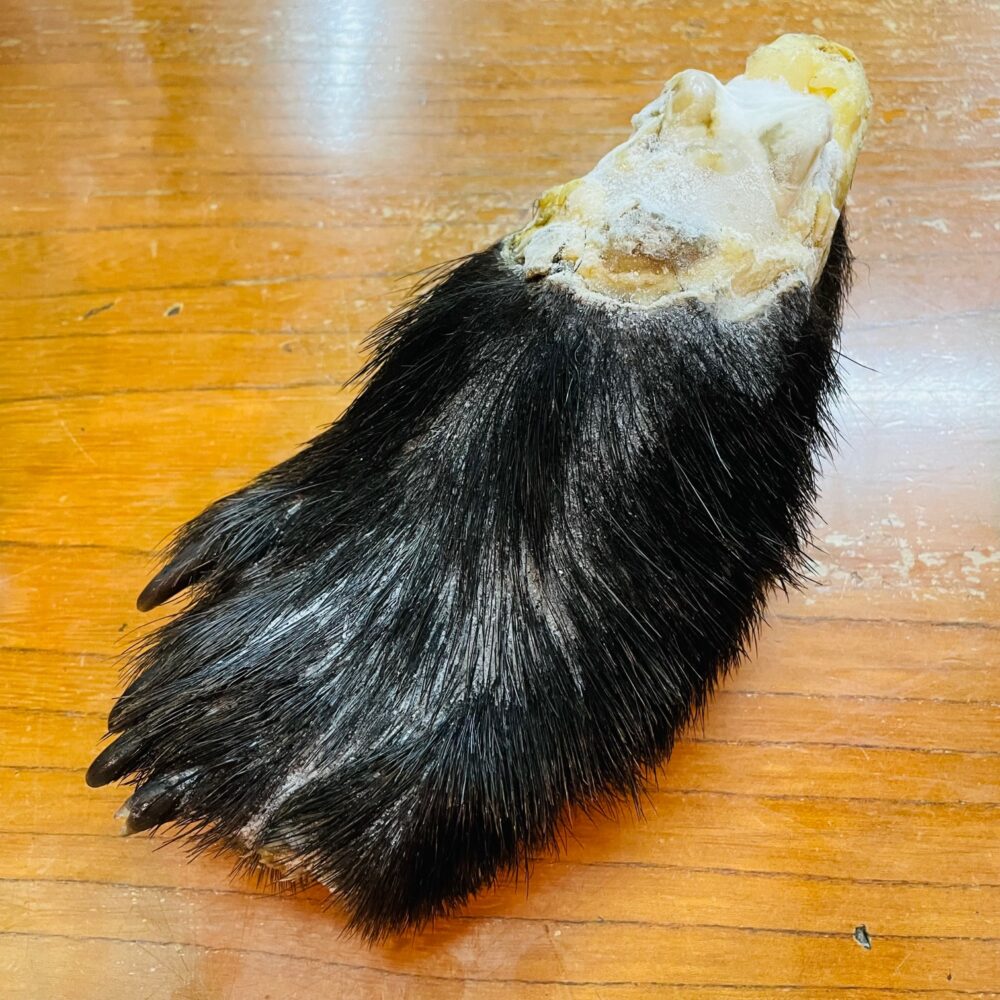Local trains in Fukushima 1 (Abukuma Express, Fukushima Transportation Iizaka Line)
Table of Contents
1: Abukuma Express
2: Fukushima Transportation Iizaka Line
3: Iizaka Onsen
4: Symposium on Living with Railways
5: JR Ban-etsu West Line
6: Dinner on Day 1
7: JR Tadami Line
8: Hayato Onsen “Tsuru no Yu”
9: Tsurugajo castle
10: Sazae-do
11: Dinner on Day 2

1: Abukuma Express
In late May, I made a study trip to Fukushima Prefecture. The main purpose was to attend the Symposium on Living with Railways, organized by Fukushima Minpo, to consider the state of local railways.
I took the Shinkansen from Ueno Station to Fukushima Station early in the morning. Most JR East’s Shinkansen trains, including the Tohoku Shinkansen and Joetsu Shinkansen, stop at Ueno Station. Ueno Station is the only underground stop on the Shinkansen in Japan, so it is refreshing to use Ueno Station on the Shinkansen sometimes.
I bought the ‘Mankatsu Sandwich Panda Package’ version at Ueno Station and had it for breakfast on the Shinkansen to Fukushima Station. The ‘Panda Package’ is sold exclusively at shops in the Ueno Zoo and Ueno Station. I drank Gassata, a carbonated coffee, with the Katsu Sandwich. It was my first time drinking carbonated coffee, and I greatly liked it. Carbonated coffee will become popular in the future.
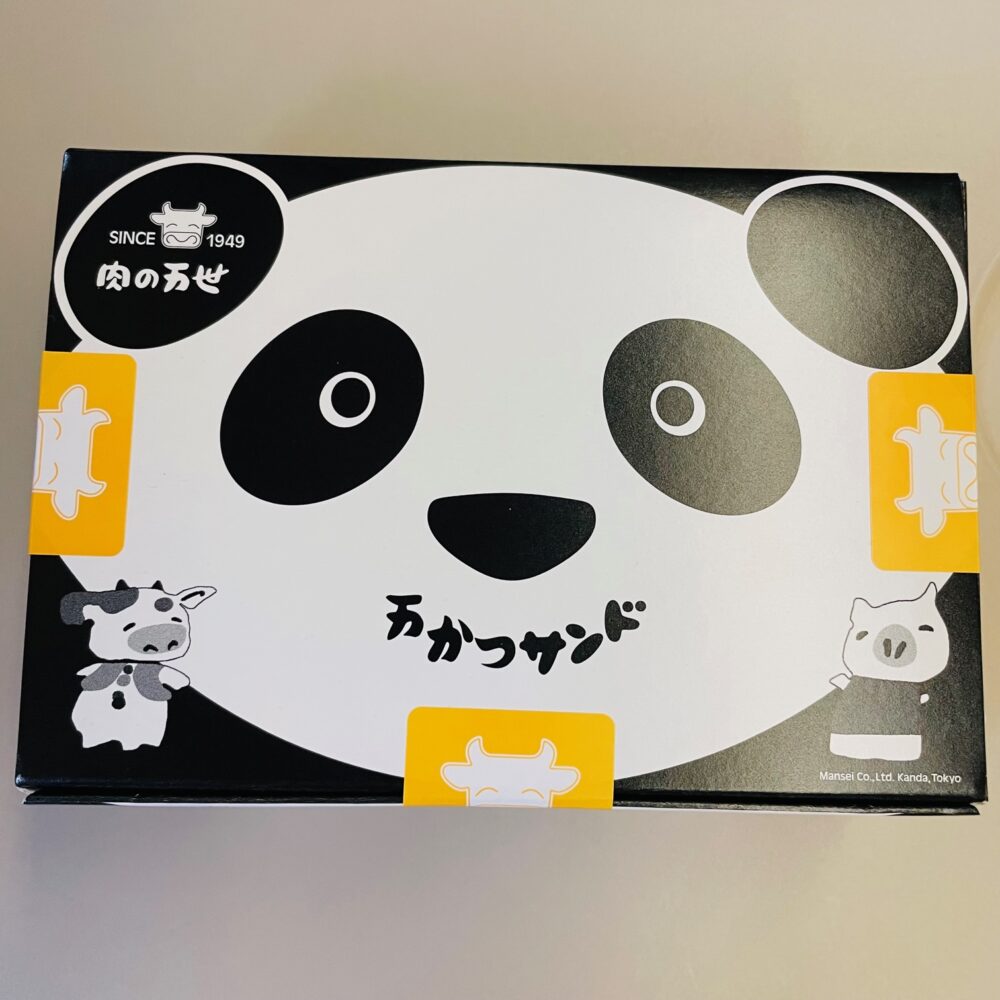
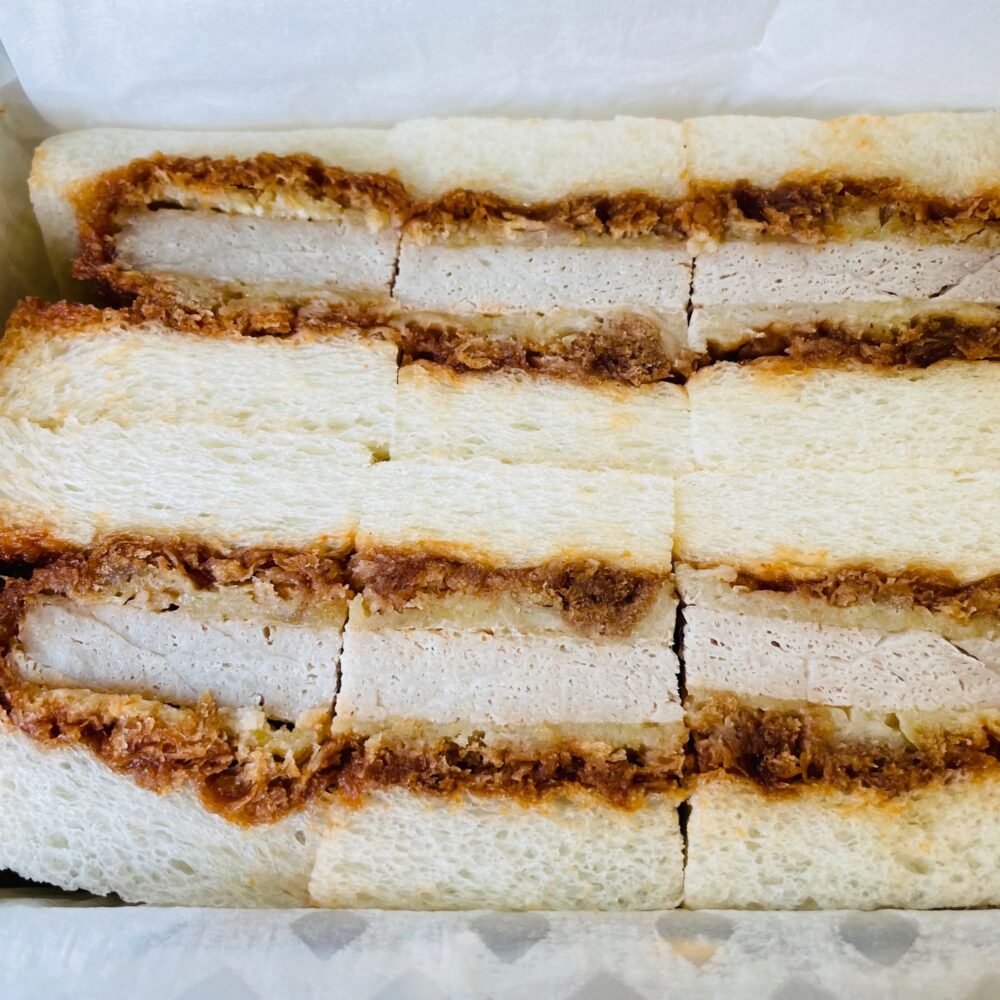
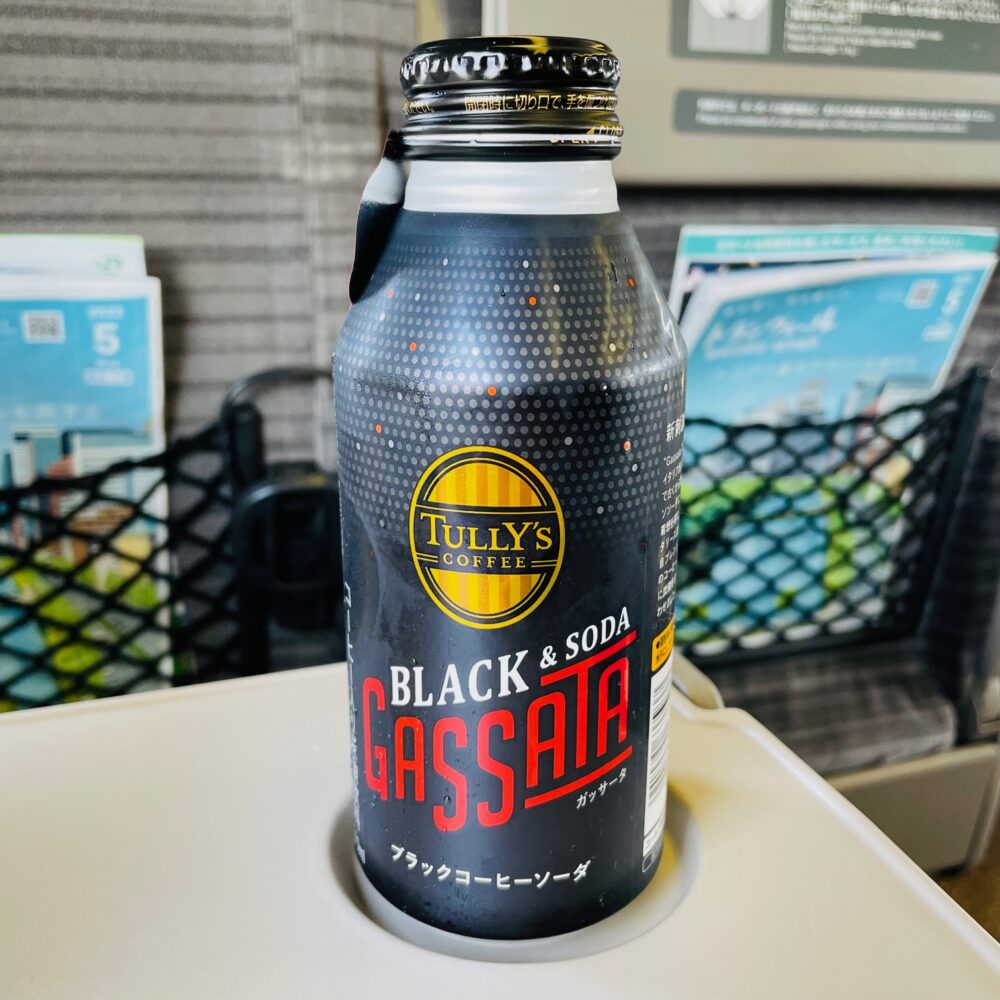
When I arrived at Fukushima Station and headed towards the Fukushima Transportation Iizaka Line, an Abukuma Express train was parked at the same platform. Abukuma Express is a regional railway company headquartered in Date City, Fukushima Prefecture. Its operating distance is 54.9 km between Fukushima Station (Fukushima Prefecture) and Tsukinoki Station (Miyagi Prefecture). Unusually for a local railway company, 100% of Abukuma Express’s revenues come from the railway business. Like many railway companies, it is loss-making. In recent years, Abukuma Express has also suffered several disasters (the 2011 Great East Japan Earthquake, the 2019 East Japan Typhoon, and the 2022 Fukushima Earthquake).
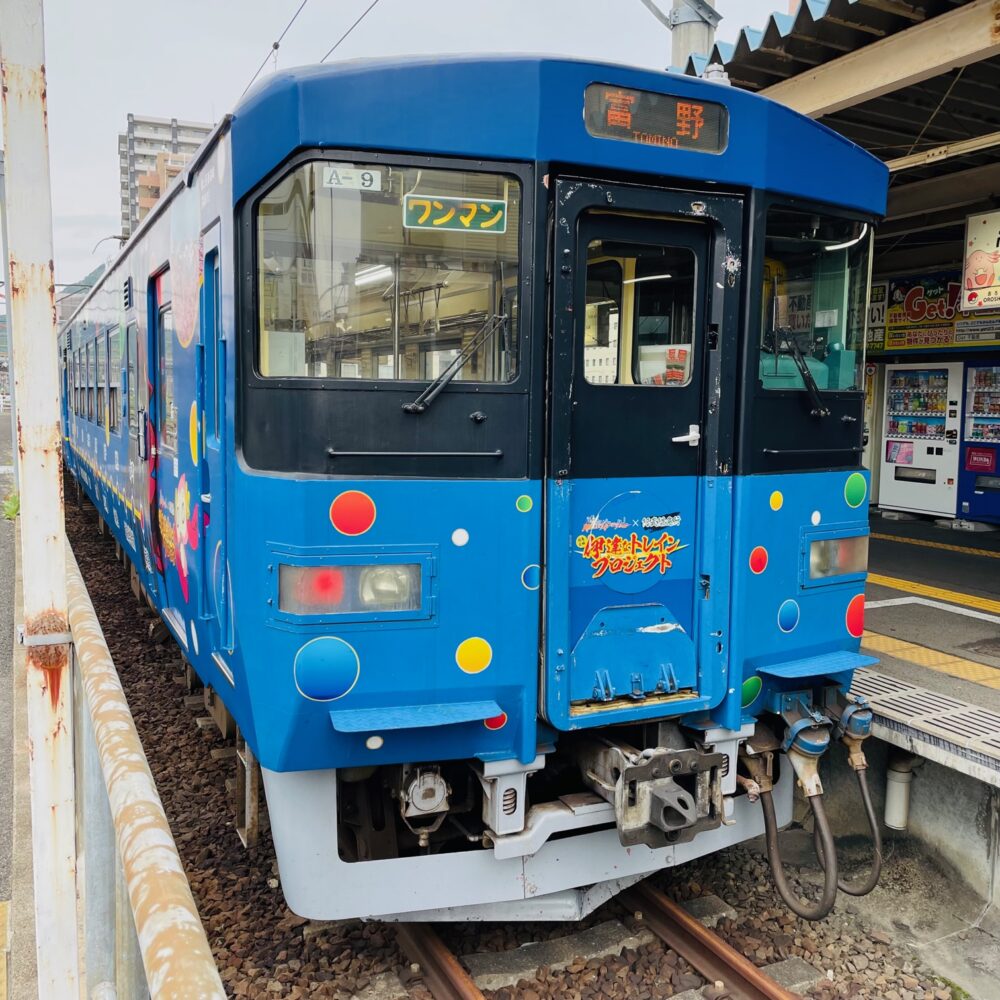
The train that stopped at Fukushima Station was the Masamune Blue Liner. It was an ad-wrapped train for the local anime ‘Masamune Datenikuru,’ produced by Date City in Fukushima Prefecture with the anime production company Fukushima Gainax.
I don’t know anything about ‘Masamune Datenikuru,’ so I can’t say for sure, but according to the Date City Commerce, Industry, and Industry Section, the screening of ‘Masamune Datenikuru’ “has brought visitors from Kyushu, Shikoku, and other regions.” The film also caught the eye of an American company, and they received an offer to expand overseas. Date City Hall has also accepted the ‘Masamune Datenikulu’ marriage certificate. Date City is quite serious about tourism town planning using ‘Masamune Datenikuru.’
Unfortunately, I did not have time to take the Abukuma Express train this time.
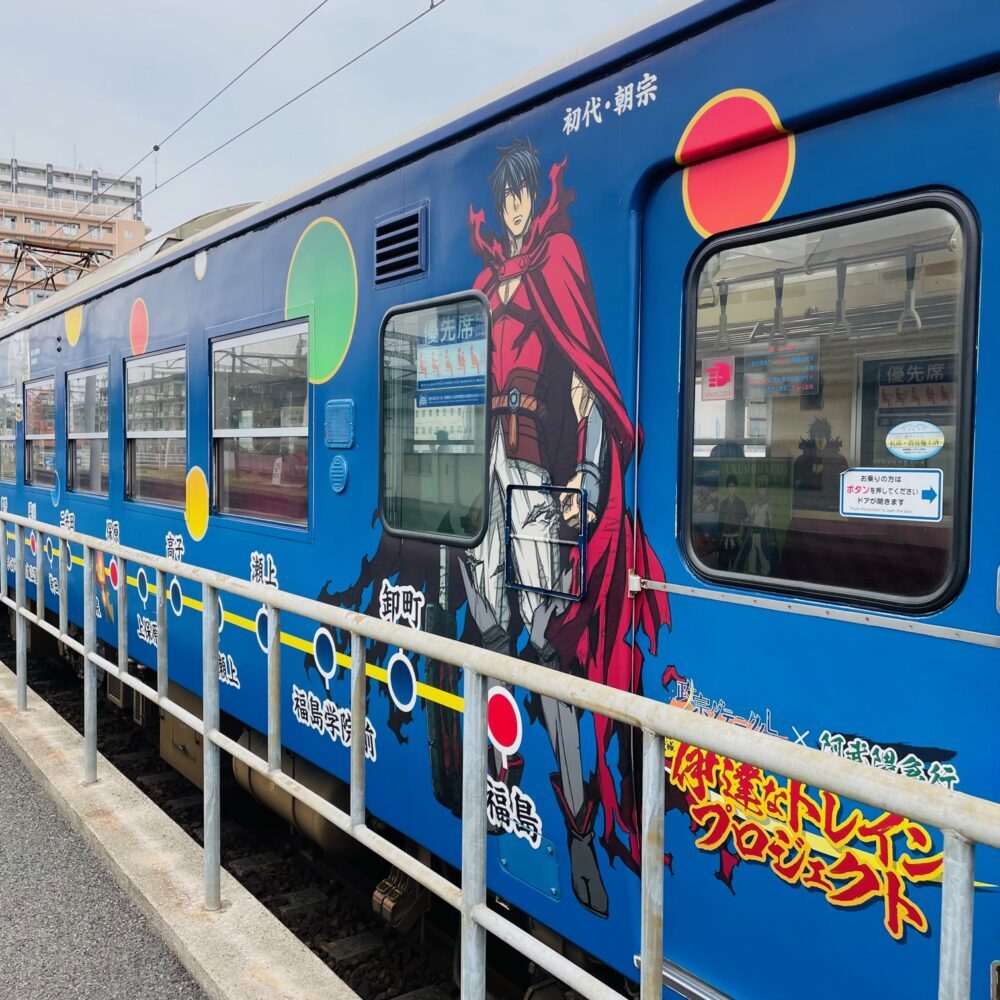
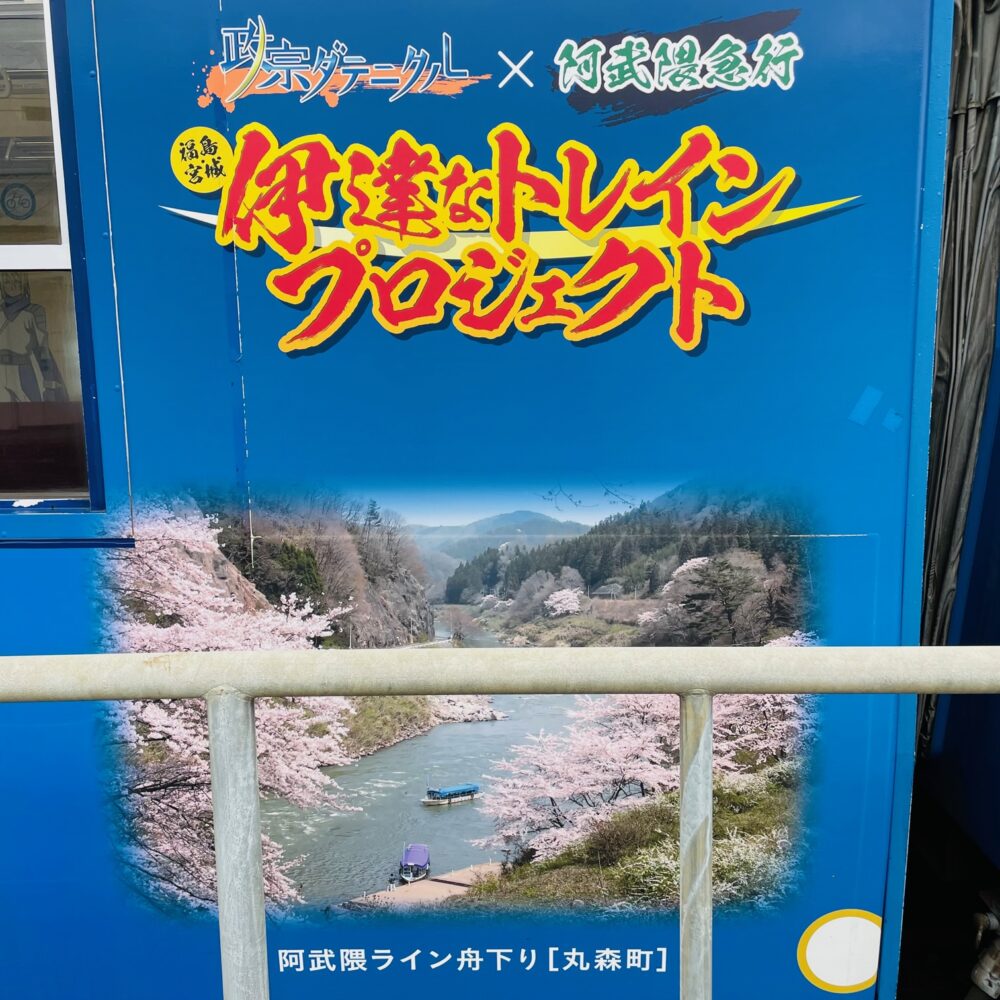
2: Fukushima Transportation Iizaka Line
From Fukushima Station, I took the Fukushima Transportation Iizaka Line to Iizaka Onsen. Inside the Iizaka Line train car was a noren (curtain) marked with the onsen symbol ‘Yu’ (hot spring). We can feel an onsen as soon as we board the train from Fukushima Station.
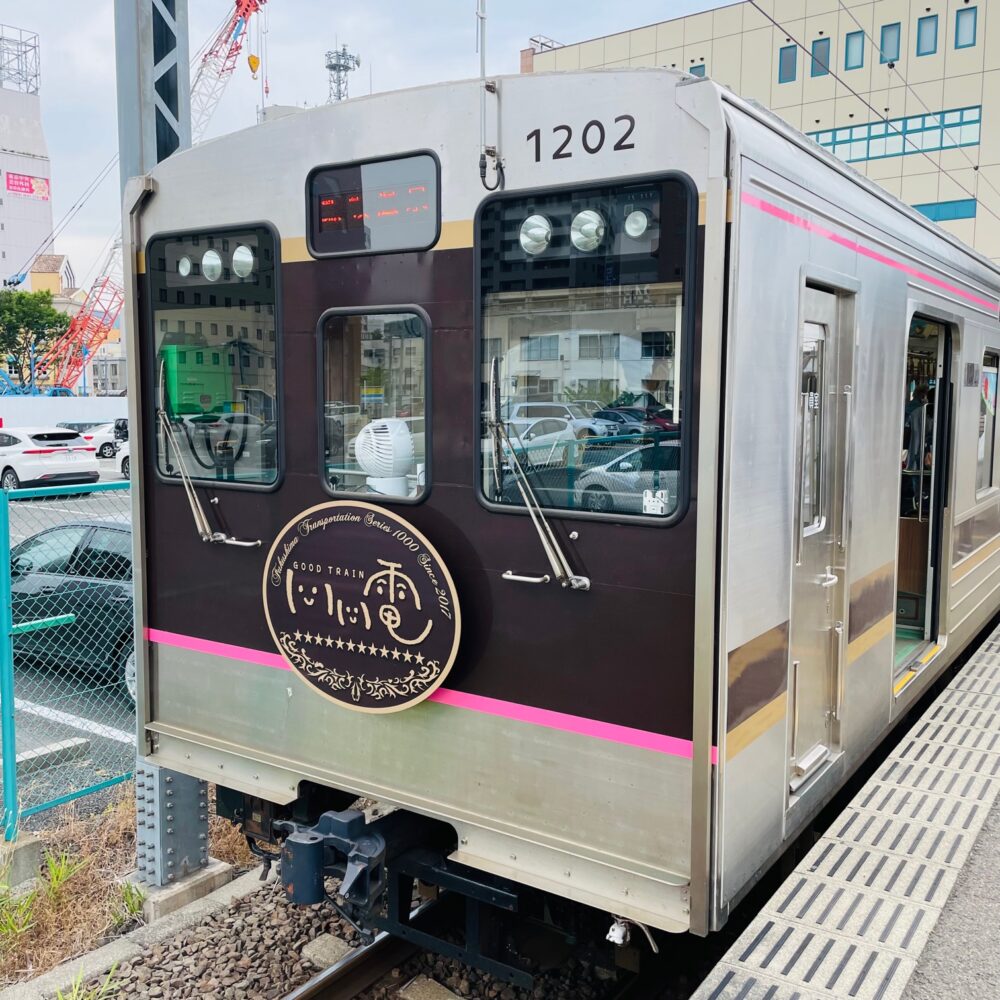
Fukushima Transportation is mainly in the bus business and was loss-making in FY 2019. On the other hand, the Iizaka Line is profitable. When I boarded the train this time, more than 70% of the seats were occupied. Is the effect of visitors to Iizaka Onsen (hot springs) significant?
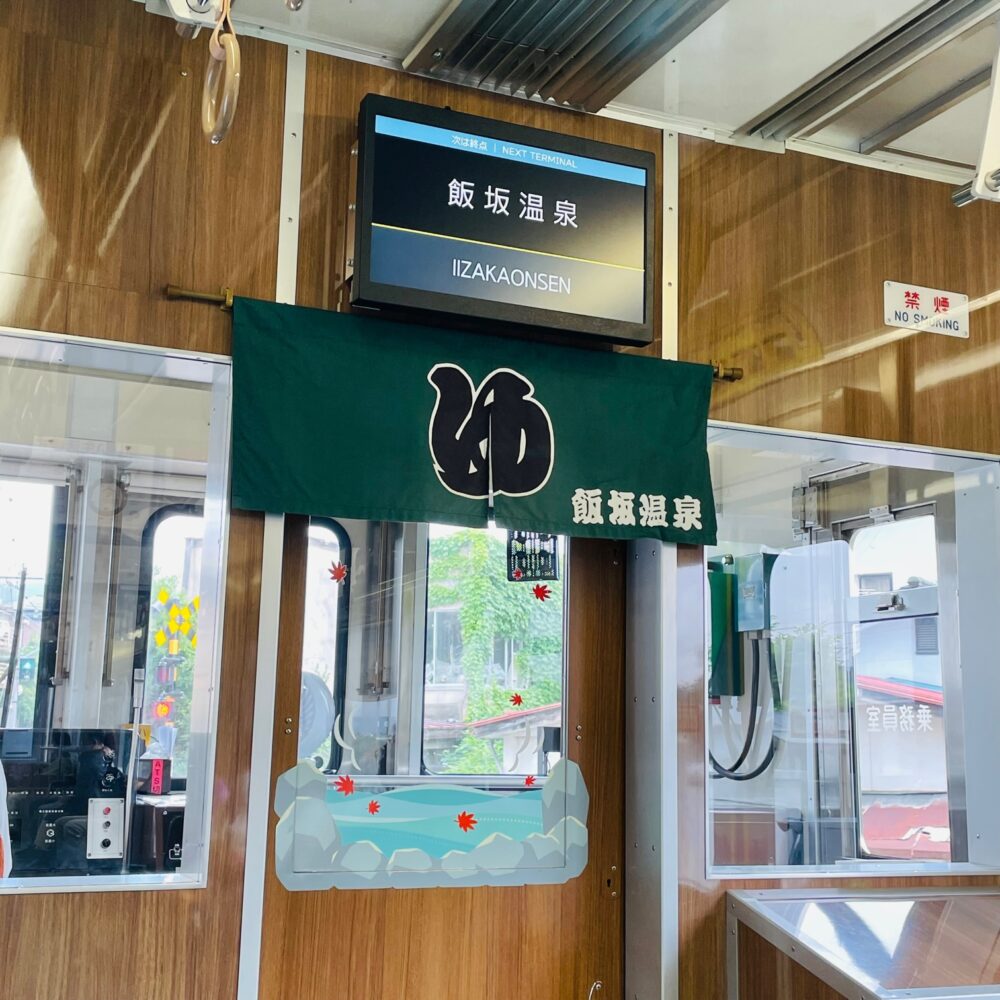
Note that the Iizaka Line’s operating route is only 9.2 km long from Fukushima Station, the first station, to Iizuka Onsen Station, the last station, which takes only 23 minutes. Most trains on the line run through residential areas, so the scenery from the windows could be more enjoyable.

3: Iizaka Onsen
Iizaka Onsen is mentioned in a legend that Yamatotakeru, a Japanese warrior, was revived after a soak in the hot spring. This hot spring is one of the oldest hot springs in Japan, with a history dating back to the 2nd century. Matsuo Basho also wrote about his visit to Iizaka Onsen in his “Oku no Hosomichi.” Helen Keller has visited Iizaka Onsen twice.
When you get off at Iizaka Onsen Station, you are in a hot spring town. It takes about two and a half hours to get there from Tokyo by Shinkansen and Iizaka Line. Although I did not see any foreign tourists when I visited, the Iizaka Onsen website has displayed in seven languages other than Japanese: English, traditional Chinese, simplified Chinese, Korean, Thai, Russian, and Finnish. These foreign languages show that Iizaka Onsen is making significant efforts to attract foreign tourists.
The attraction of Iizaka Onsen is its nine communal bathhouses, characterized by their hot water. I used three communal bathhouses: ‘Hato-yu,’ ‘Sabako-yu,’ and ‘Kiri-yu.’ The source temperatures are 48.8 °C, 51.0 °C, and 60.0 °C, respectively. The temperature was not high enough for a long soak. However, strangely enough, I felt refreshed after soaking and felt my fatigue had been lifted. I think Iizaka Onsen is one of the best hot springs I have ever visited.
Hato-yu is a hot spring with a history of around 1,200 years. Since it was rebuilt in 2011, it has been a clean public bath. Hot and warm baths are available, so even those who don’t like hot water can easily use this hot spring. The entrance fee for Hato-yu is 300 yen, while other public baths charge 200 yen.
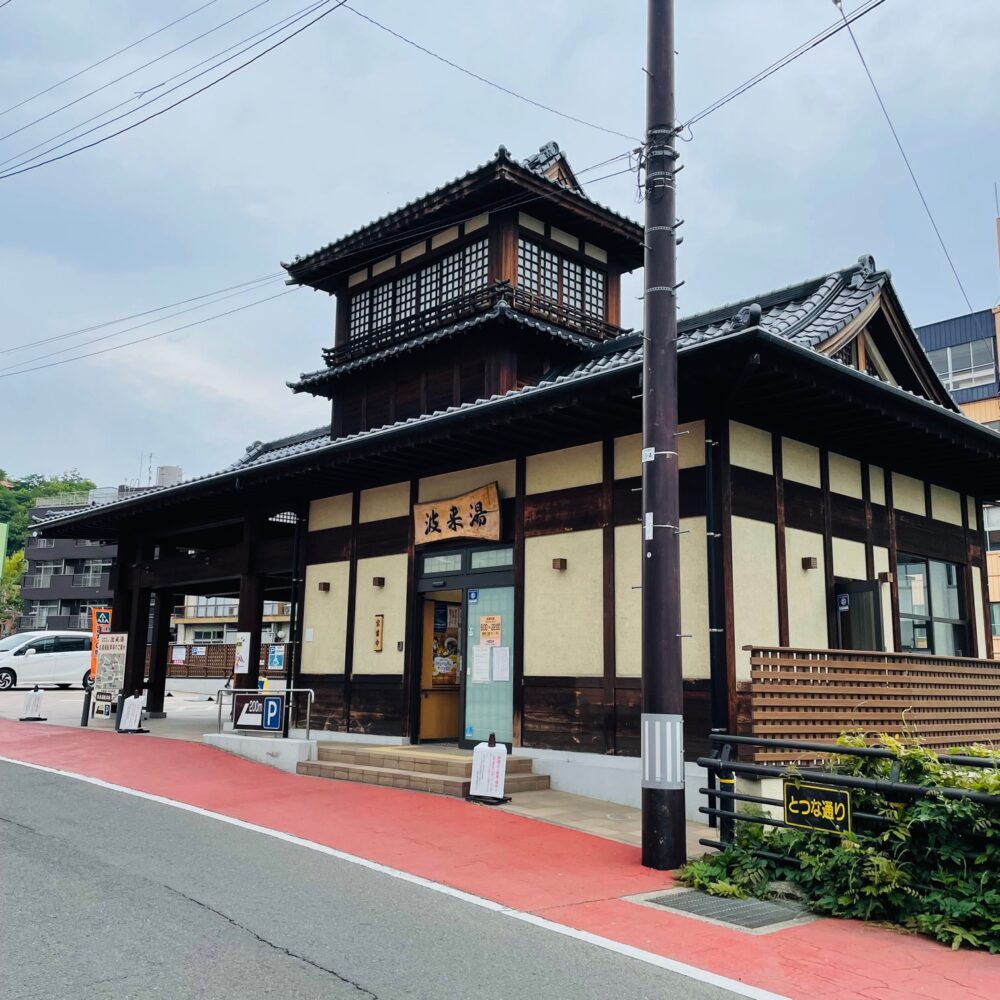
Sabako-yu is the oldest bath in Iizaka Onsen. It is a very tasteful reproduction of a public bathhouse from the Meiji era (1868-1912) built-in 1993. The high ceilings of the Sabako-yu allow outside light to enter the bathhouse, giving it a wonderful sense of openness.
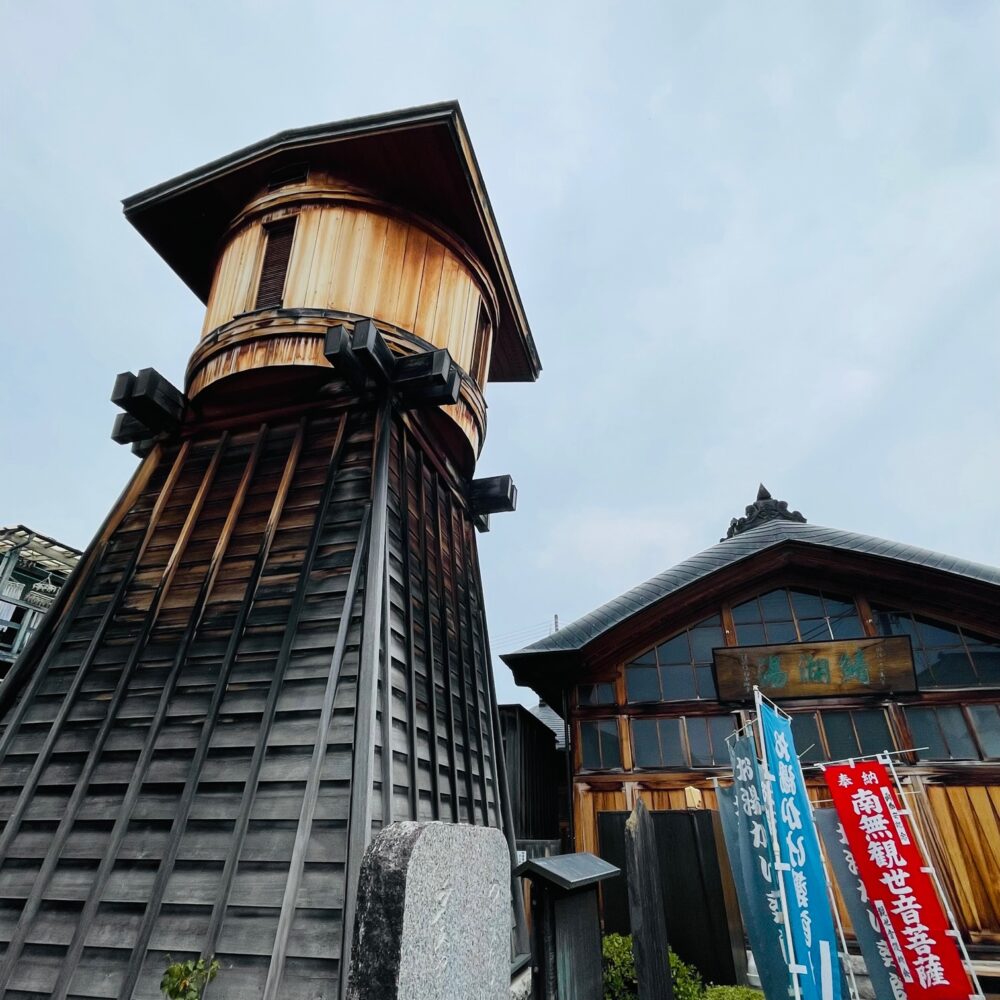
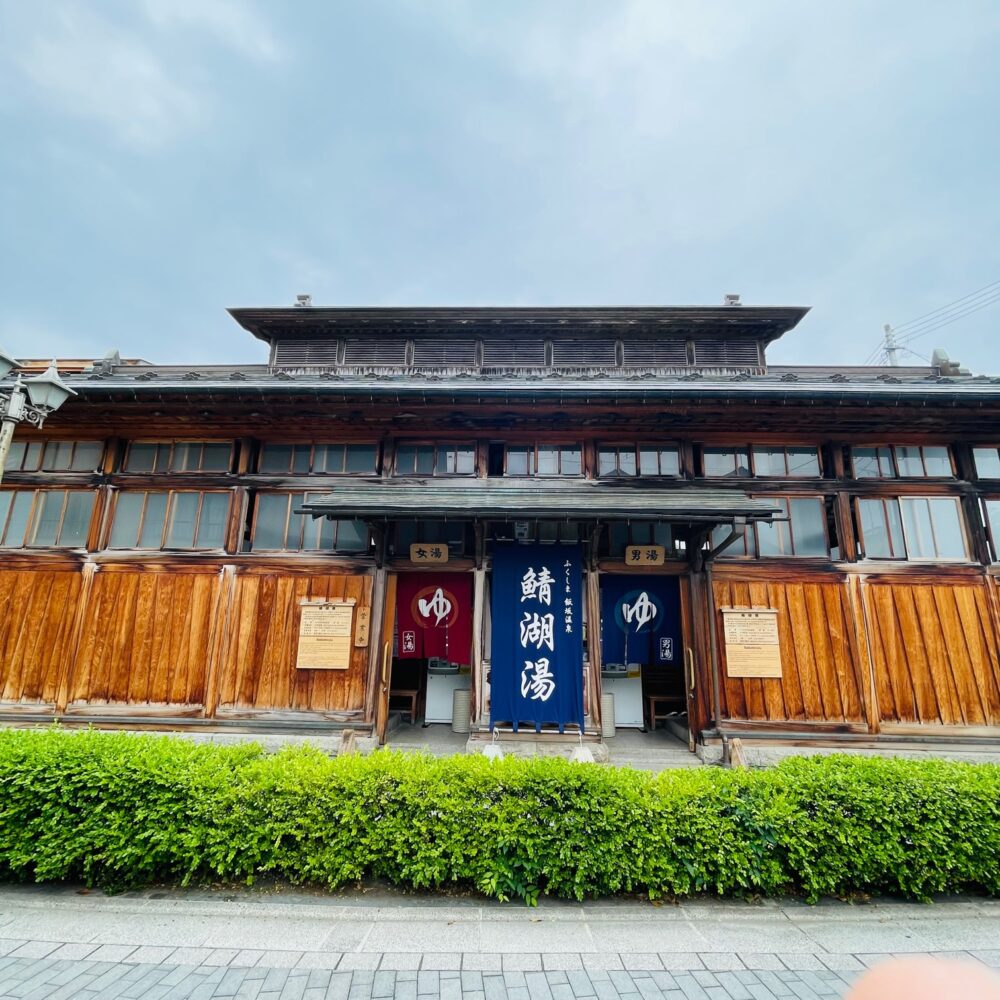
The Kiri-yu is a rustic structure typical of public baths with tiny bathtubs. The hot water is too hot, and it is a demanding hot spring to soak in. However, the locals did not seem to mind the hot water and soaked themselves in it without a care.
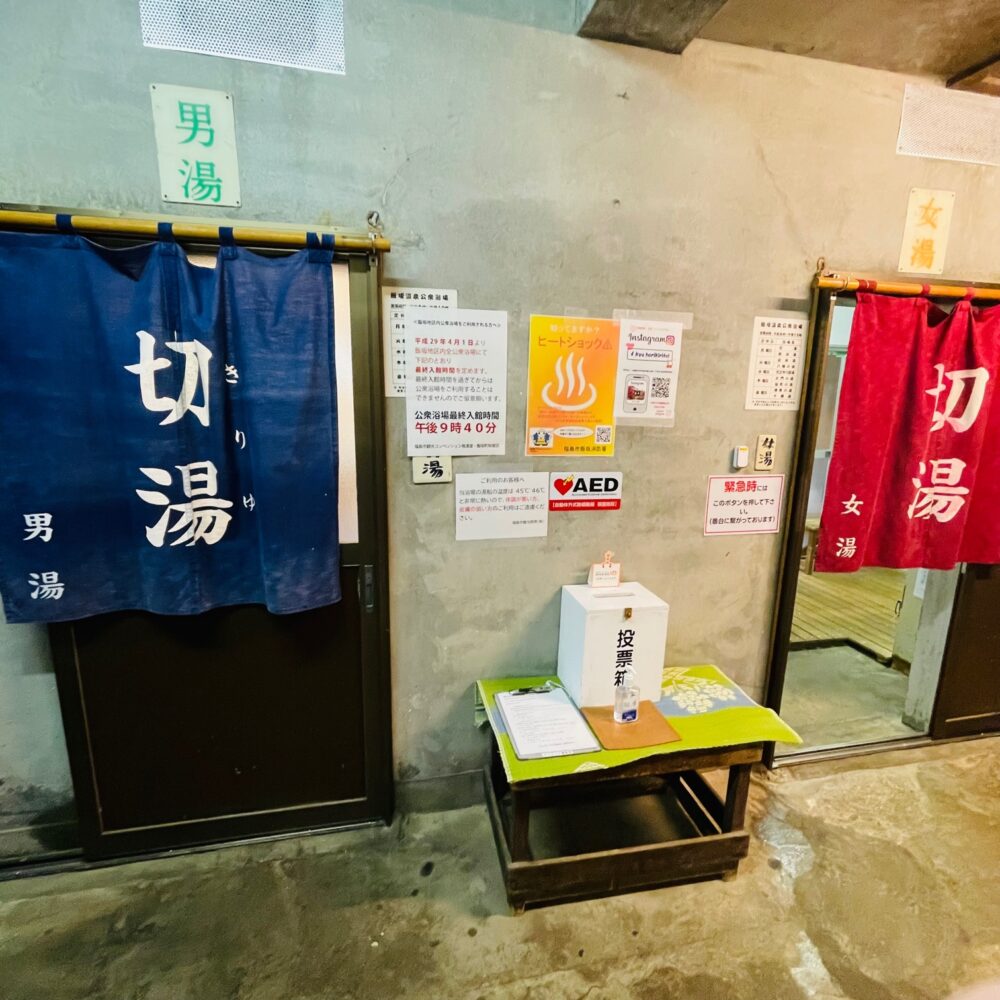
In addition, if you buy a ‘one-day free ticket (800 yen)’, you can get on and off the Iizaka Line (740 yen round trip from Fukushima Station) and visit nine public bathhouses, which is a considerable bargain if you use one or more of the public bathhouses.
4: Symposium on Living with Railways
From Iizaka Onsen, I returned to Fukushima City and, after lunch, attended the ‘Symposium on Living with Railways‘ organized by Fukushima Minpo to consider the state of local railways.
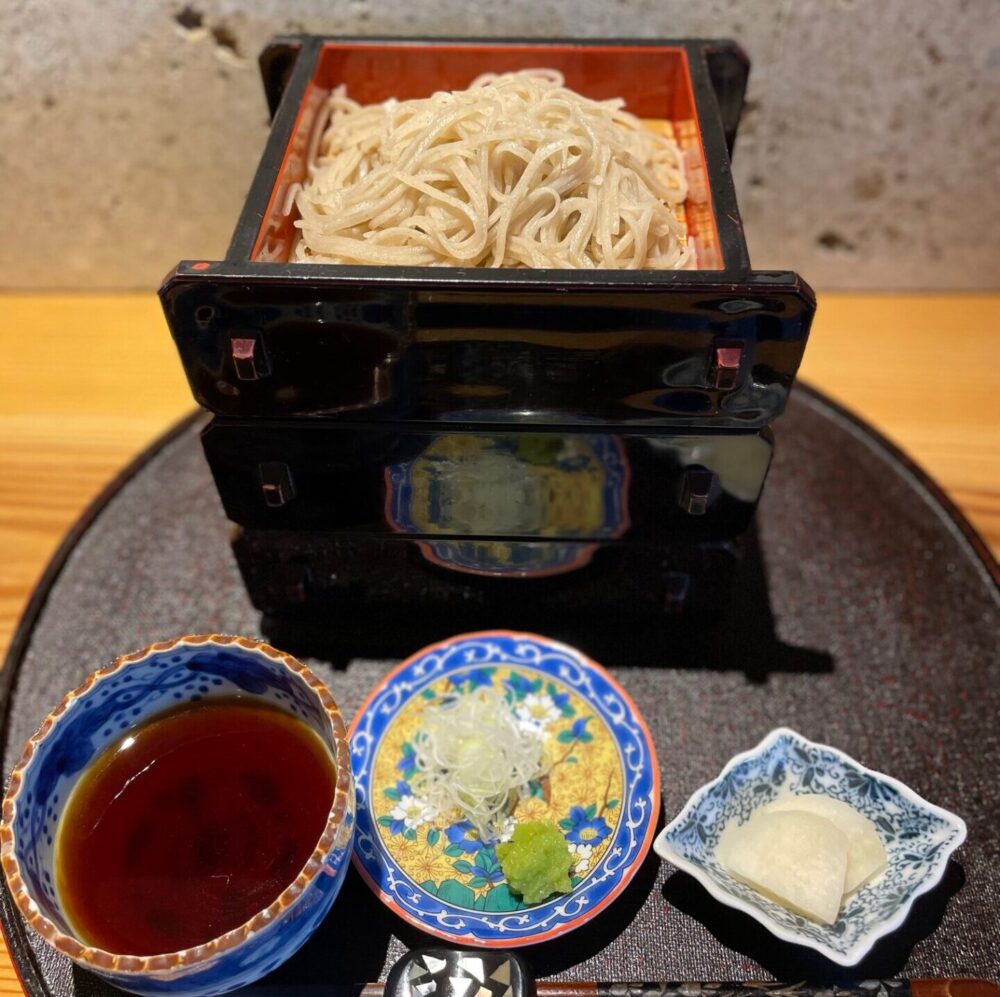
It was a lively symposium, with Minister of Land, Infrastructure and Transport Tetsuo Saito and Fukushima Governor Masao Uchibori also participating in the panel discussion. The Minister and the Governor were impressive for their humor and informal discussions.
There were also presentations by Haruko Sakai, Tadami Line Regional Coordinator, and by Shotaro Anzai and Shuntaro Watanabe from Aizu High School, who was awarded the top prize at the Tadami Line National High School Summit Presentation Competition.
The imposing statements of opinion by each presenter and the very lively discussions by the speakers were impressive. It was important for everyone to reaffirm the significance of railways and have a ‘my rail’ mindset to use them actively. For this purpose, active information dissemination is necessary.
As each attendee pointed out and recognized, population decline due to the aging of the population is a stark fact. The people of Fukushima Prefecture declined by 13.8% between 2000 and 2020, much higher than the 0.6% decline in Japan. Furthermore, the National Institute of Population and Social Security Research forecasts that between 2020 and 2045, Fukushima Prefecture’s population will decline significantly (-28.3%).
It is challenging to increase the number of Japanese passengers because of a shrinking pie due to population decline. Attracting foreign tourists may therefore be necessary. However, attracting foreign tourists was not mentioned at all in this symposium. Unfortunately, together with the low number of foreign-language signs on the railways in Fukushima Prefecture, there was no positive attitude toward attracting foreign tourists. According to the Tourism Agency’s accommodation statistics, Fukushima Prefecture ranked 40th in foreign overnight stays (2019) by prefecture.
There was also no mention of the required handicapped accessibility for aging people. According to the Ministry of Land, Infrastructure, Transport and Tourism, Fukushima Prefecture has 32% of stations with eliminated steps (handicapped accessible), well below the national average of 52%. On the other hand, the population aging rate (percentage of the population aged 65 and over) in Fukushima Prefecture is 32%, higher than the national average of 29%. While the population is aging, handicapped accessibility is low. Train companies will need to improve accessibility to increase passengers.
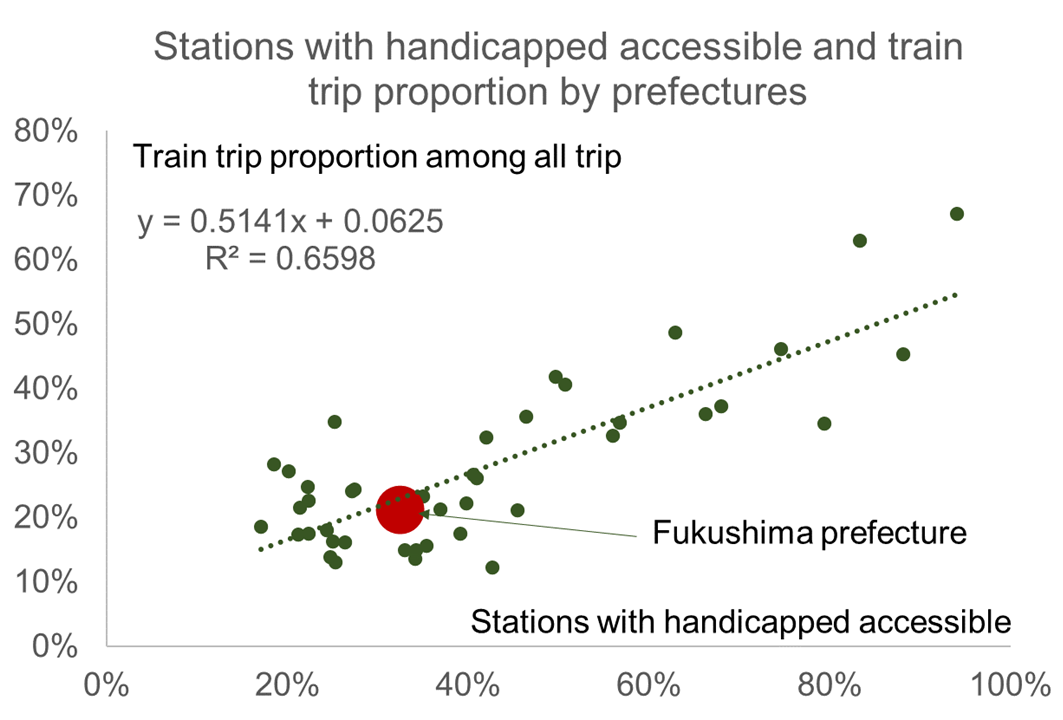
Some respondents also commented that the railways are a ‘Means of transport in the area.’ Especially for students who cannot drive a car, it is a ‘Means of transport in the area.’ However, the perception of railways as a ‘Means of transport in the area’ may change as automated vehicles, which are now undergoing demonstration tests in various regions, progress. Therefore, it may be necessary to provide essential attractions that only railways can offer rather than cars (including automated vehicles).
Candidates for essential attractions that can only be offered by rail include the dissemination of spectacular views that can only be seen from the railway rather than from the road and actively encouraging and promoting food and drink, such as a box lunch sold at a railroad station, which is difficult to provide by car due to the rocking.

5: JR Ban-etsu West Line
After attending the Symposium on Living with Railways, I headed from Fukushima Station to Aizu Wakamatsu Station. From Fukushima Station to Koriyama Station, I traveled by Shinkansen, and from Koriyama Station to Aizu Wakamatsu Station, I traveled by JR Ban-etsu West Line.
At Fukushima Station, I could see the Tohoku Shinkansen and Yamagata Shinkansen being linked together for the first time.
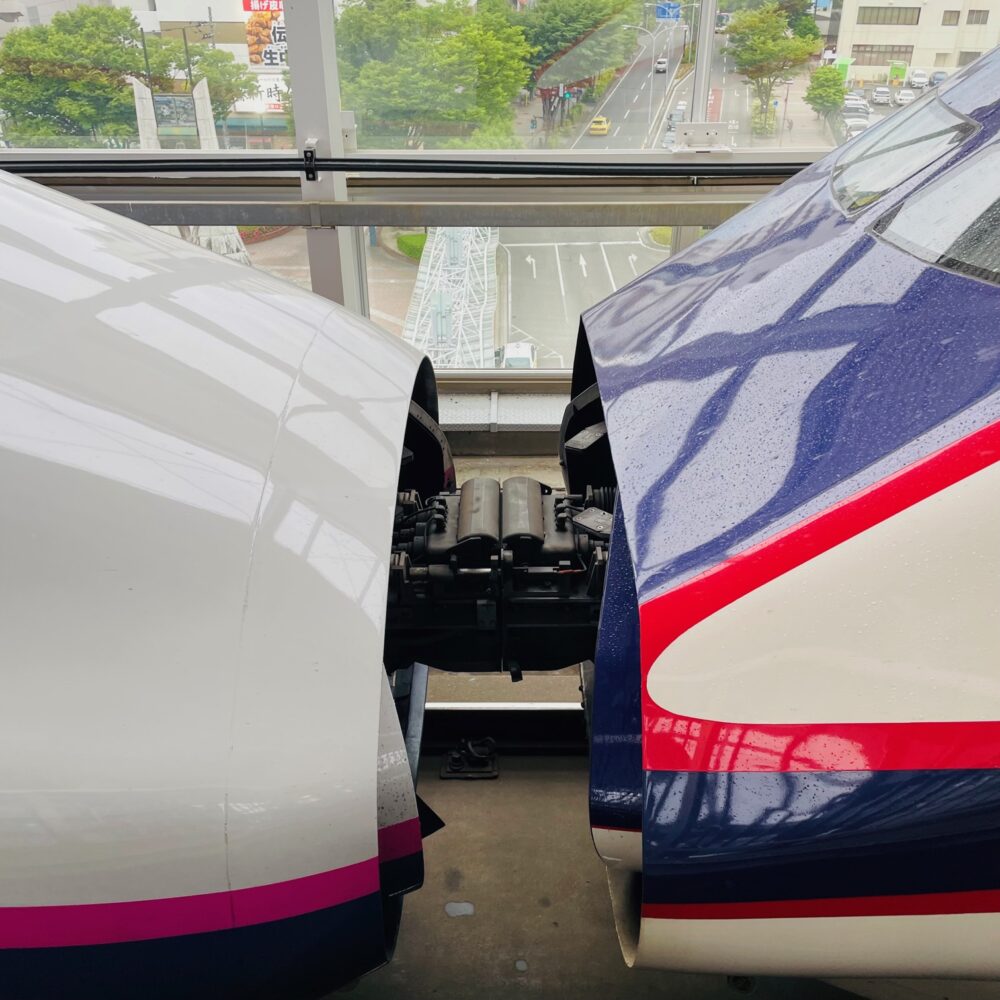
I had the famous ekiben ‘Nori Nori Ben’ for the first time at Koriyama Station. The ‘Nori Nori Ben’ is an ekiben that won the 2018 Ekiben Daishogun (Grand Prix) at the ‘Ekiben Aji no Jin’ competition organised by JR East. It is a very simple ekiben with ‘nori’ and ‘Okaka (finely chopped katsuobushi, dried bonito)’ on rice and side dishes of omelet and grilled salmon, but it certainly tasted good. I particularly enjoyed the ‘Okaka’ and the rice. The ‘Nori Nori-ben’ was also sold at Aizu-Wakamatsu Station, the last stop on the JR Ban-etsu West Line (in the case of the train I took this time).
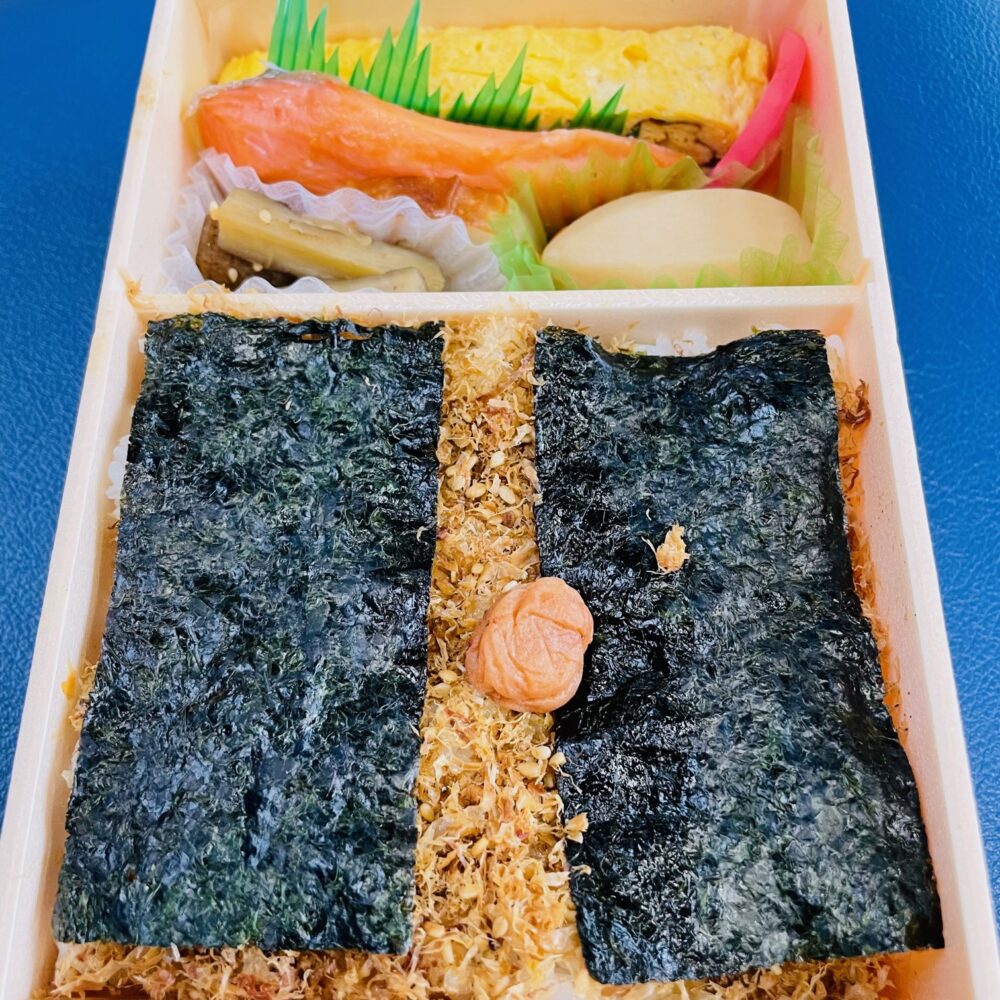

The JR Ban-etsu West Line has an operating distance of 175.6 km between Koriyama Station in Fukushima Prefecture and Niitsu Station in Niigata Prefecture. However, the majority of trains operated are between Koriyama and Aizu-Wakamatsu Stations.
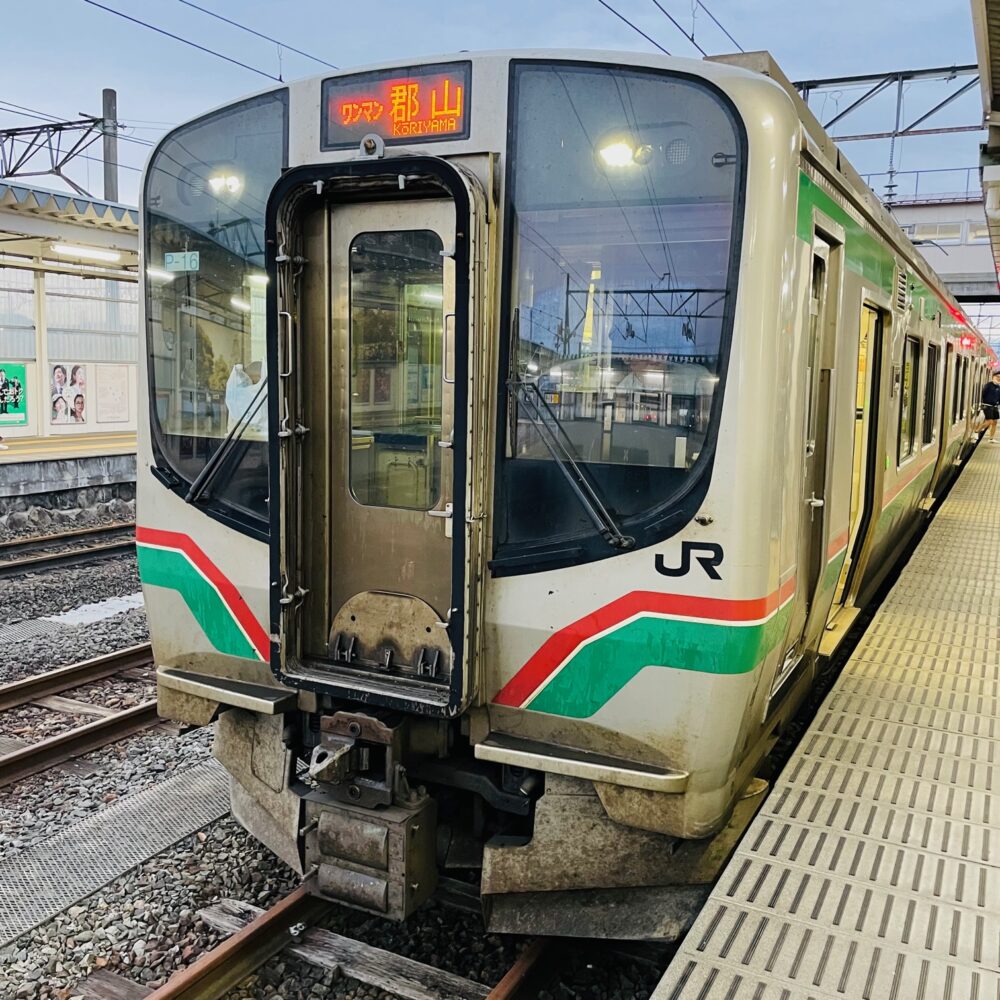
JR East discloses Aizu Wakamatsu Station to Gosen Station (four stations before Niitsu Station, the last stop) as a line with low passenger numbers. The operating deficit between Aizu-Wakamatsu Station and Gosen Station was an unbelievable ¥3.337 billion compared to transport revenue of ¥154 million in FY2021. The situation is bleak. From FY 1987, the first year of the privatization of Japan Railways, to FY 2021, the number of passengers on this line section decreased by 74% (from 9,354 to 2,395 passengers per day). The severe operating results of the JR Ban-etsu West Line show the harshness of Japan’s local railways.
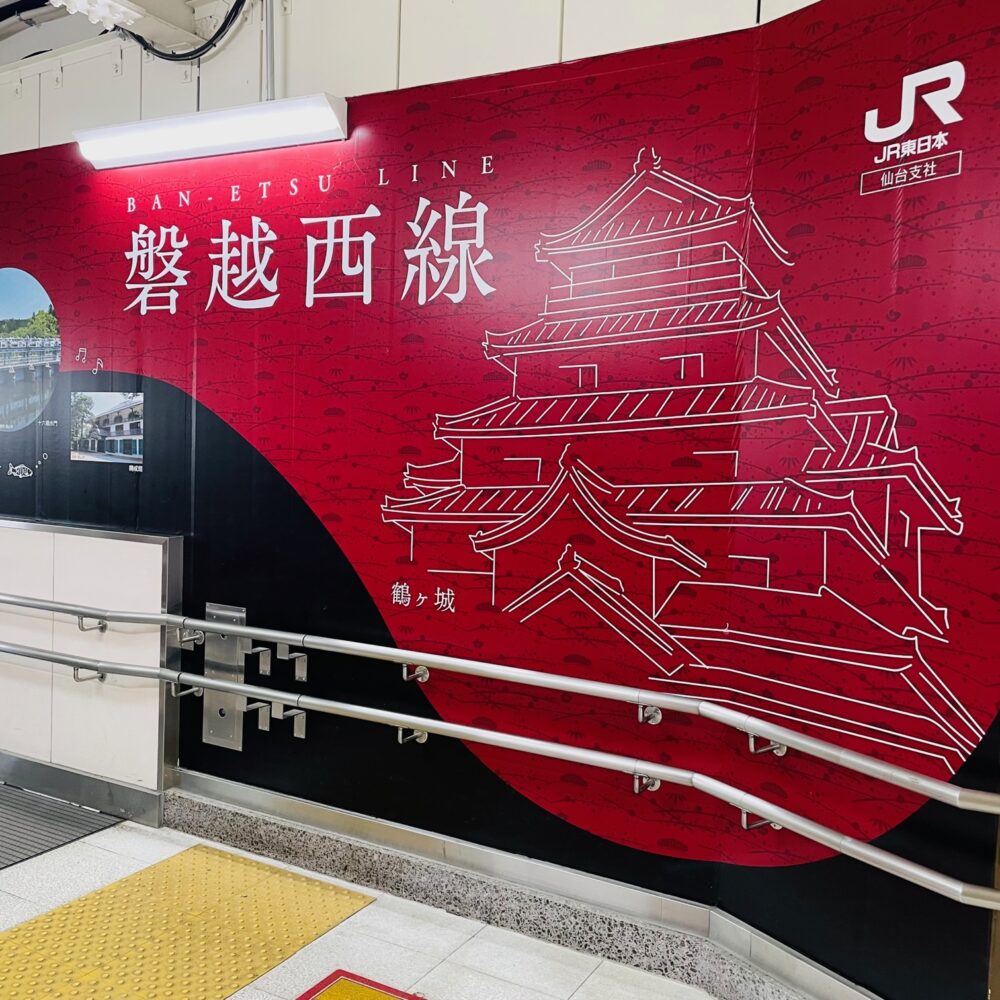
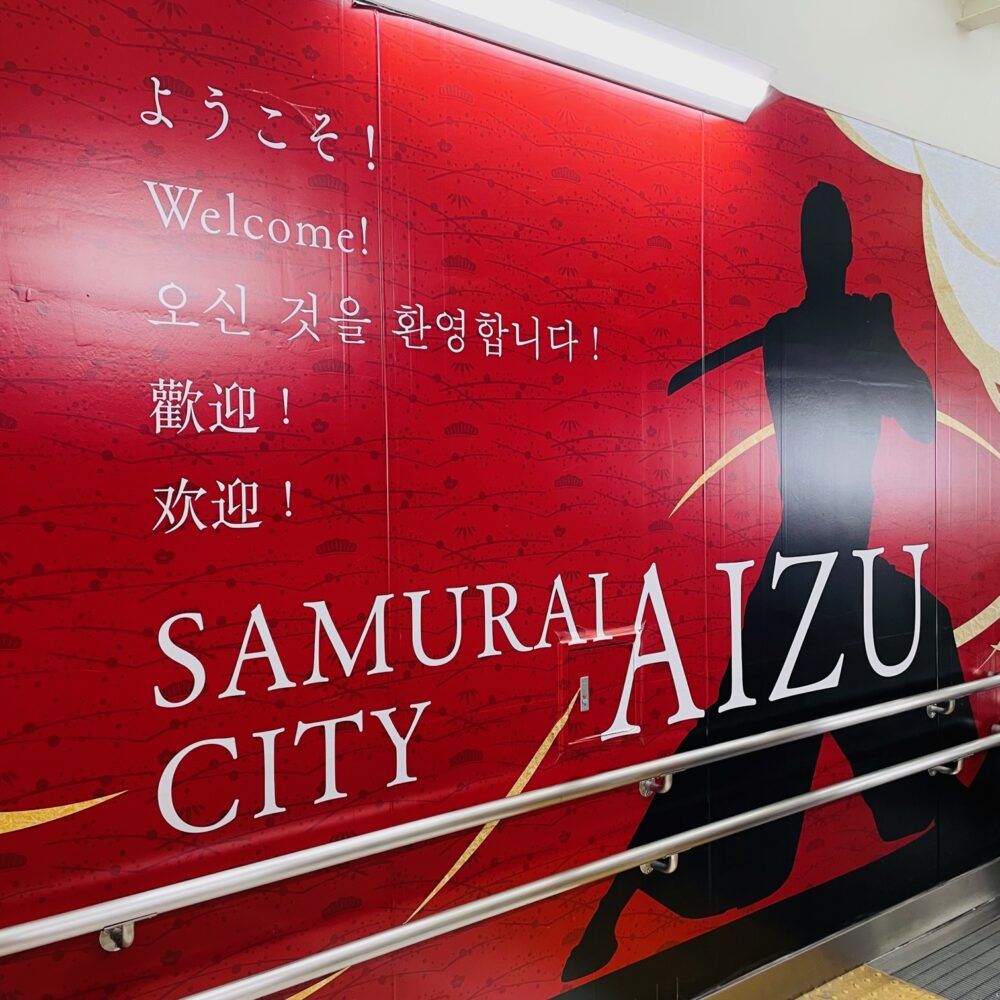
6: Dinner on Day 1
After arriving at Aizu-Wakamatsu Station and checking into the hotel, I had dinner at a tavern called ‘Mugitoro.’ Mugitoro was run by an elderly owner. I had tuna topped with Japanese grated yam, bracken, herring stewed in Japanese pepper, and horse sashimi. The yam and bracken are local products that the owner picks from the mountains. At the same time, the pickled herring with Japanese pepper and horse sashimi are local dishes of Aizu Wakamatsu.
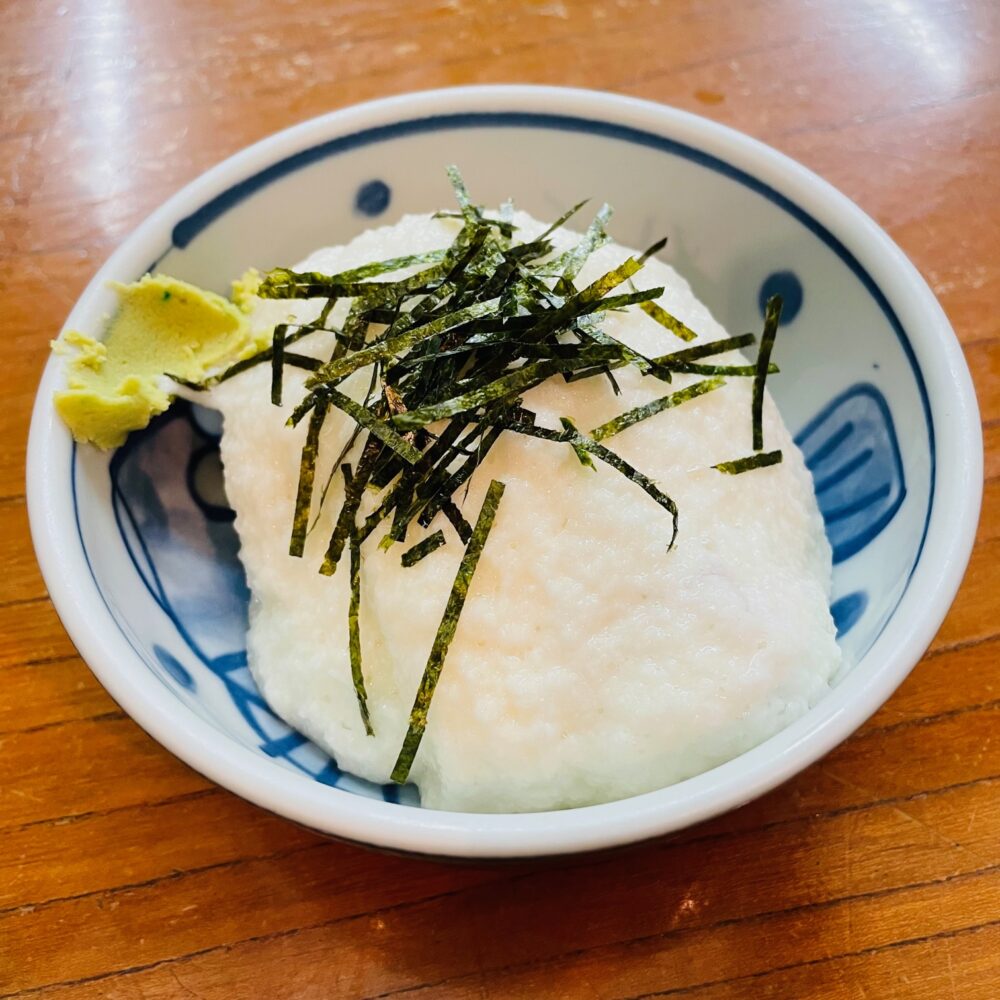
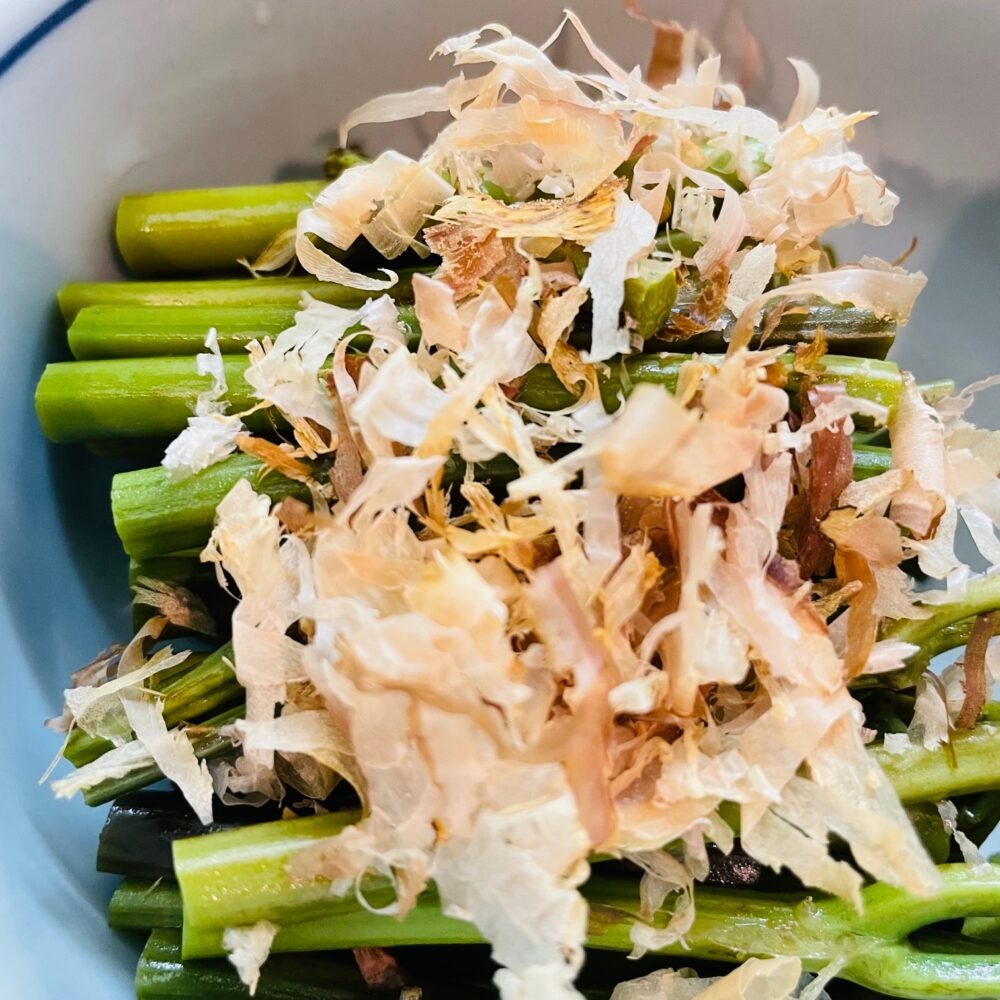
Herring pickled in Japanese pepper dates back to the Edo period, when ‘Migaki nishin,’ dried herring caught in Hokkaido, were transported to Aizu Wakamatsu via the Sea of Japan. As the dried herring had an odor, this dish was created by combining it with fresh Japanese pepper leaves to remove the odor. The dish was so delicious that it could be eaten in any quantity. Herring pickled in Japanese pepper has been selected in the ‘Best 100 Local Dishes’ and ‘Our Regional Cuisines’ selected by the Ministry of Agriculture, Forestry and Fisheries.
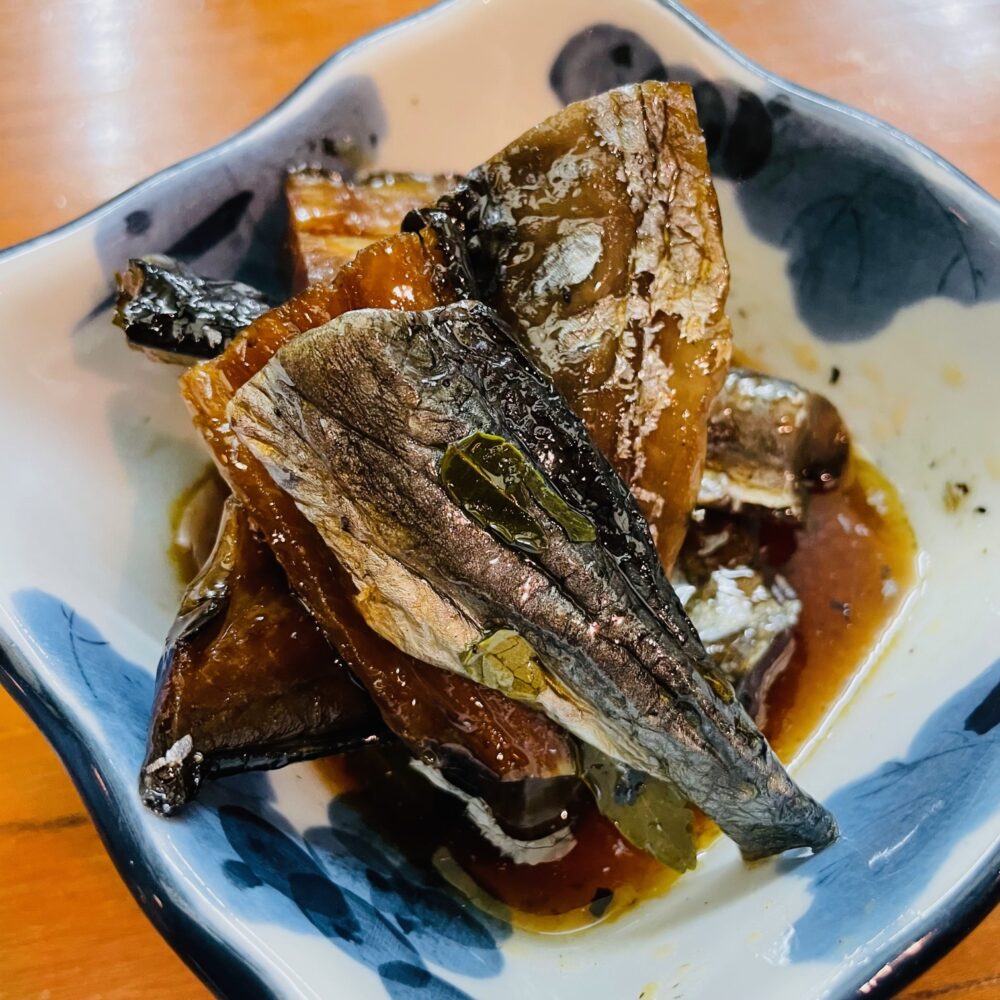
The horse meat culture in Aizu Wakamatsu seems to have started during the Boshin War (1868-1869) when horse meat was fed to the wounded people. Horse sashimi was first served by Rikidozan (A famous professional wrestler、1924-1963), who came to Aizu Wakamatsu and ate raw horse meat with ‘mustard miso’. Horse sashimi has also been selected as one of ‘Our Regional Cuisines’ selected by the Ministry of Agriculture, Forestry and Fisheries.
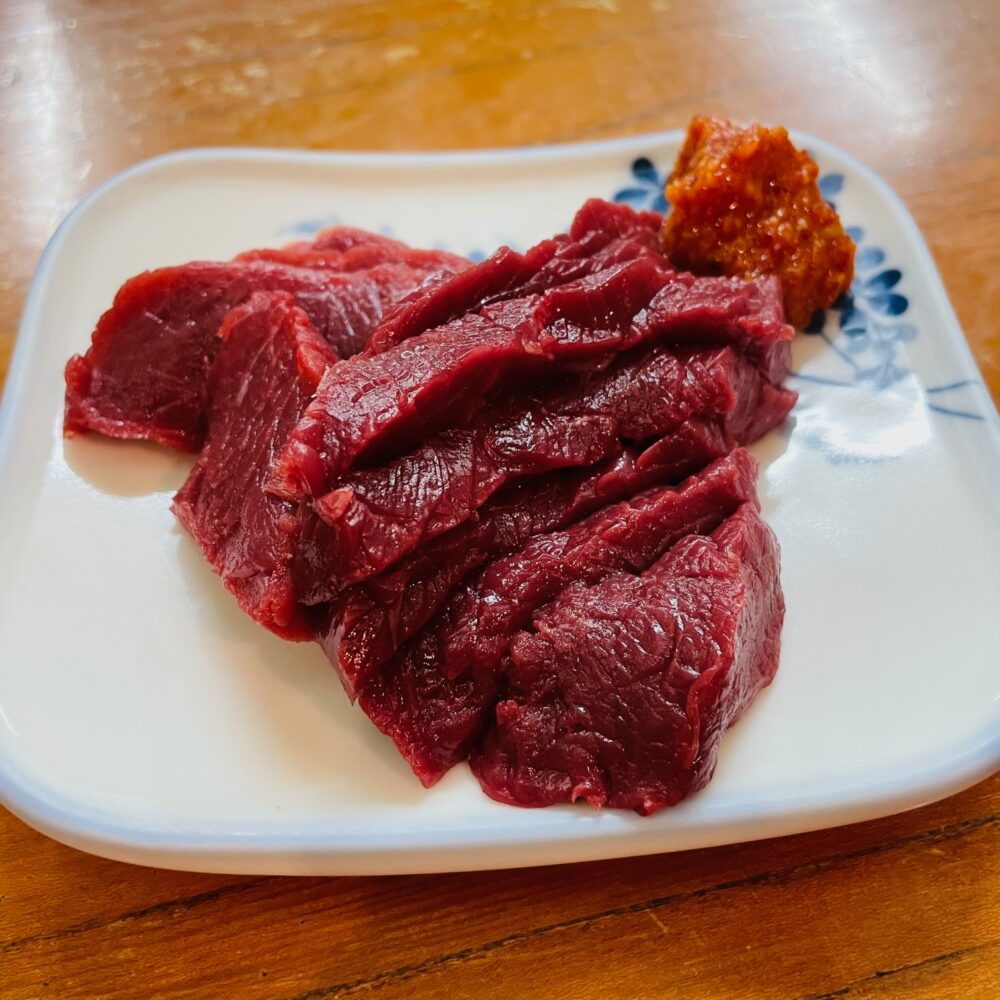
The owner of Mugitoro is also a hunter and showed us the leg of a Japanese bear he had shot. According to the owner, if you touch a Japanese bear, the god of the mountain, we will have a ‘good thing’ afterward. I really had a ‘good thing’ the next day.
